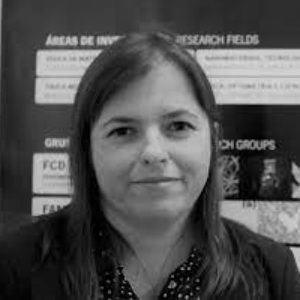Title : Pharmaceutical applications of graphene-based nanomaterials in cancer theranostics
Abstract:
After its astonishing and unexpected discovery in 2004, graphene, a two-dimensional nanomaterial made of single-layered carbon molecules organized in a honeycomb cross section, has been broadly investigated for an incredible number of uses including quantum material science, nanoelectronics, energy storage and chemical processes. Since the first reported study on the utilization of graphene as a drug delivery system for cancer chemotherapy in 2008, graphene and graphene-based nanomaterials (GBNs) have likewise enraptured the excitement of specialists for its promising biomedical applications, translatable in an expanding number of published studies. GBNs include graphene derivatives, such as graphene oxide (GO), nanographene oxide (NGO); reduced graphene oxide (rGO) and graphene quantum dots (GQDs). GBNs show unique chemical nanosheet-like structure and remarkable physical and optical properties that lead to numerous potential pharmaceutical applications. Among different pharmaceutical applications, theranostic uses of graphene in cancer treatment and diagnosis have pulled in consistently expanding interests throughout the most recent years. In this talk, the optical properties of GBNs and the advantages of these emerging luminescent nanomaterials are explored, namely their large surface area that enable the conjugation with a large diversity of functional groups. Further advantages comprise excellent biocompatibility, high near infrared absorption capabilities and its inherent fluorescent properties that allows monitoring the cellular uptake of these nanocarrier systems. After presenting the unique photophysical and physical-chemical characteristics of GBNs I will offer an outline of recent progresses and pitfalls in uses of graphene in pharmaceutical applications with spotlight on cancer therapy and diagnosis. Finally, a critical comment on the difficulties and points of view for future research and clinical translation in this field will be provided.
Audience take away:
• This talk will provide audience with the capacity to understand the physical-chemical properties of different GBNs, being able to distinguish the different GBNs types, main preparation methods and advantages or disadvantages of each GBN type
• Audience will learn the inherent advantages and limitations of therapeutic strategies (drug and gene therapy, phototherapy (PTT), magnetic hyperthermia (MHT), photodynamic therapy (PDT)) and diagnostic strategies (therapy guiding by fluorescence imaging (FI), two photon fluorescence imaging (2PFI), infrared thermal imaging (IR-TI), Raman imaging, magnetic resonance imaging (MRI), positron emission tomography (PET), single-photon emission computed tomography (SPECT), computed tomography (CT), photoacoustic imaging (PAI) and ultrasound imaging (USI)) that are being used in nanotheranostic systems for cancer. Audience will also learn how the combination of complementary strategies can result in a synergic theranostic effect
• The promises and the pitfalls of GBNs translation to clinics will be presented together with a short tutorial of guidelines that should be followed by those that are developing or wish to develop GBNs systems for pharmaceutical applications. The aim is to provide a more rational and standardized design strategy of the nanotherapeutic systems



